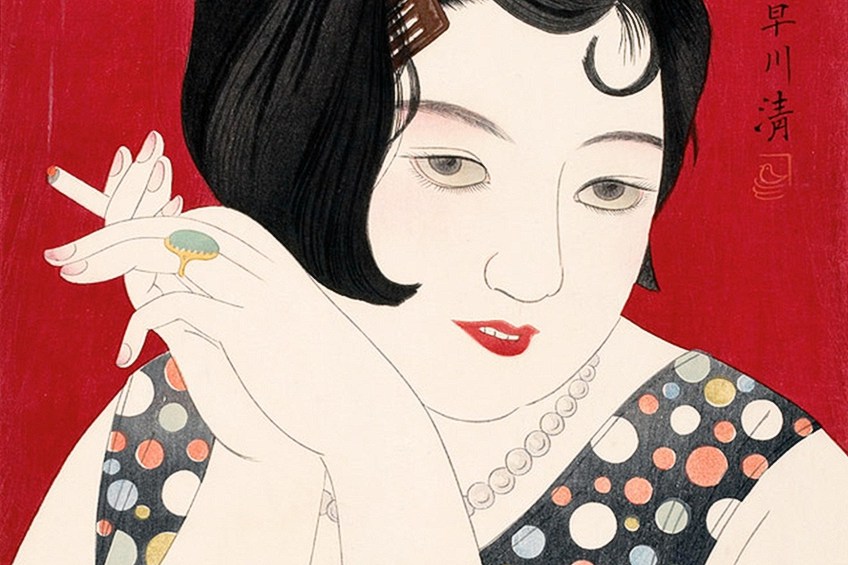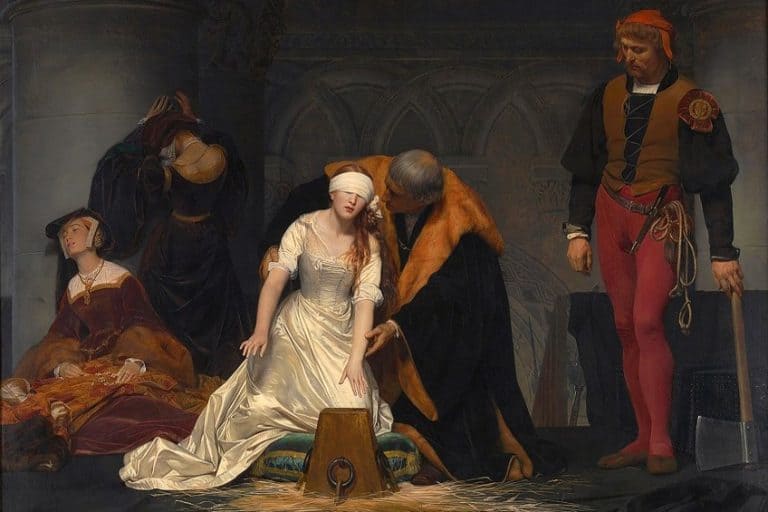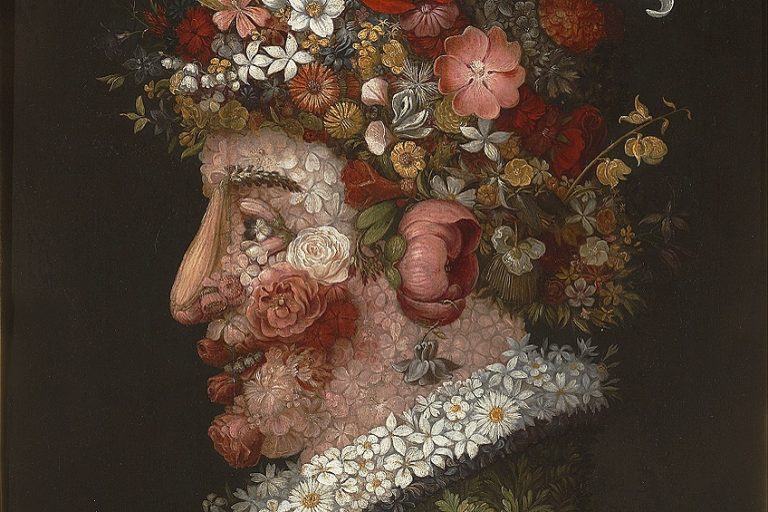Famous Art Deco Paintings – 10 Influential Art Deco Artworks
Rising in popularity during the interwar period, the Art Deco art style proved to be a very influential movement in terms of its modernity. As a very decorative style of art, the type of Art Deco artworks to emerge from this movement included paintings, designs, furniture, and architectural structures. Today, several famous Art Deco paintings are still discussed in terms of their iconic features and relevance to the style. As these paintings are very respected in the current art society that exists, we will be exploring the top 10 most celebrated works.
An Introduction to the Art Deco Art Movement
The iconic Art Deco movement was known to roughly originate in western Europe around the 1920s. However, the defining moment occurred in 1925 when Paris held the celebrated International Exhibition of Modern Decorative and Industrial Arts, which was said to firmly cement the style into the art world. After its first official exhibition, Art Deco made its way over to the United States in the 1930s, where a handful of artists were inspired to play around with the movement’s features.
Art Deco artworks were characterized by immaculate lines, strong geometric shapes, and intricate designs which could be seen in all of the works produced.
The Industrial Revolution acted as a major point of inspiration for artists, as the emerging ideals of modernity were quickly taking control of the world. Suddenly, artworks that were created using the Art Deco style were distinctly contemporary in nature – a true celebration of the newly emerging era of advancement.

1920s Art Deco works initially personified the idea of wealth and luxury. While several notable artists at the time were known for their unique artworks, the main reason for their fame was the fact that they used very expensive materials to construct their works. As the Art Deco style emerged after the industrialization period and became well-known between both world wars, the majority of society was struggling financially at that point.
This meant that Art Deco artworks became solely reserved for the aristocratic society due to their opulence.
Known mainly in the decorative arts and architectural spheres, the Art Deco movement eventually spanned across various genres including costume and set design, interior design, furniture making, sculpture, and painting. As Art Deco represented the concept of modernism-turned-fashion, its artworks were both individually made extravagant items and mass-produced pieces. The ultimate goal of this art form, which went on to shake the world, was to create a sleek and nonconventional elegance that represented the fresh developing era.
The Art Deco Artworks That Were Typical of this Movement
Perhaps one of the most distinctive features of the Art Deco style was its incredibly streamlined look. No matter what type of artwork was being produced, be it a mere painting or a grand architectural piece, most Art Deco artists made use of simple lines and clean shapes to emphasize the sleek and elegant ideas of the movement. Although most Art Deco pieces were seldom mass-produced, the typical characteristics of the works reflected a true admiration for the modern machine and all that it was capable of.
The art style that dominated before Art Deco, which many artists expressed boredom with, was the famous and intricate style of Art Nouveau.
Artists and designers who worked according to the Art Nouveau ideals noticed that the style had suddenly become very antiquated in comparison to the rapidly modernizing world, which provided a gap for Art Deco to enter. Because of this, all Art Deco artworks that were created displayed very obvious hints to modernity, as this innovation in society was largely celebrated.
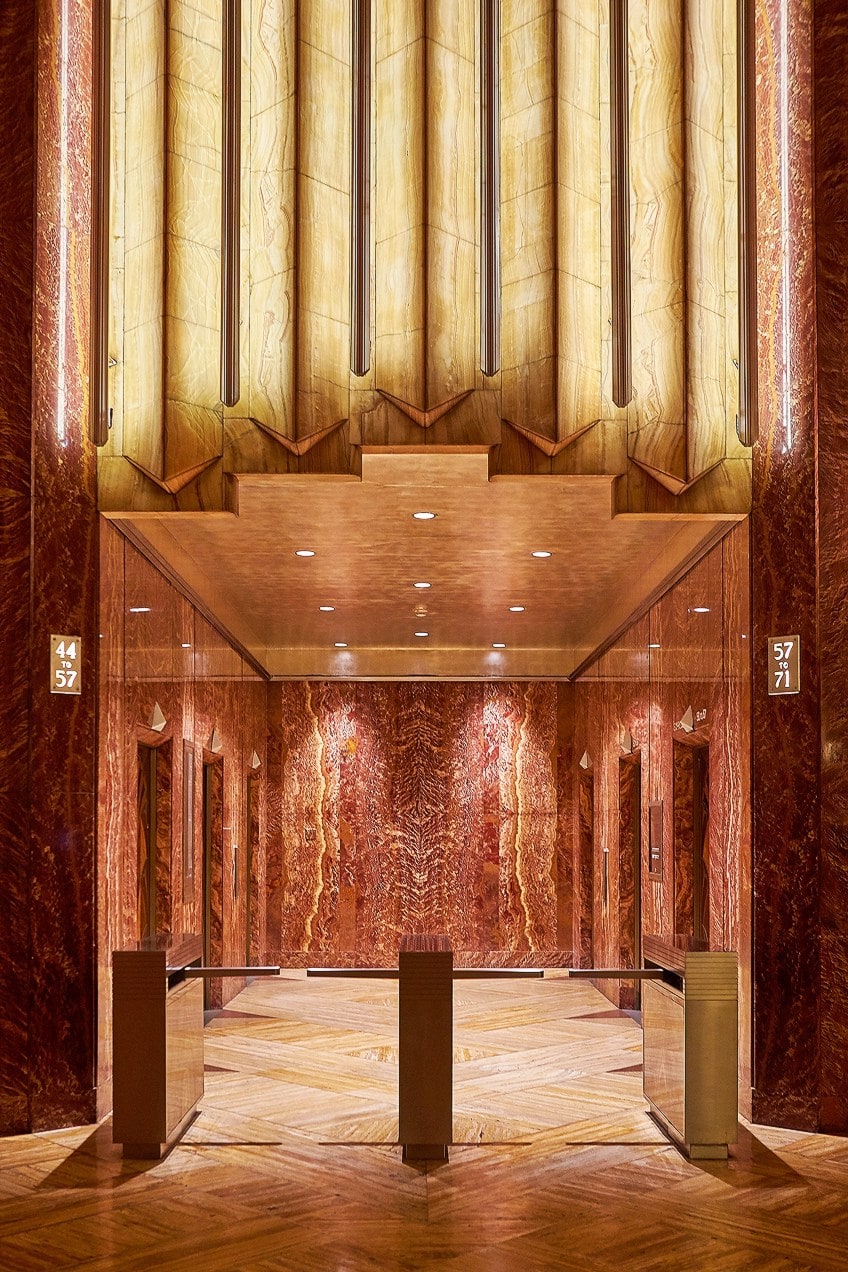
Famous Art Deco art left the world completely mesmerized once it emerged onto the art scene. An example of these iconic artworks that captivated society’s attention was the construction of both the Chrysler Building and Empire State Building, as they were designed according to Art Deco ideals and characteristics.
Although the style went out of fashion during World War Two, Art Deco experienced a revival in the late 1960s and continues to be a huge source of inspiration in decorative arts today.
Our Top 10 Most Famous Art Deco Paintings
The Art Deco movement was very well known for its furniture pieces, fashion, jewelry, and interior designs that emerged. While painting was not the standard medium practiced during the movement, several artists experimented with painting as well and produced some notable works. Below, we will be taking a look at 10 of the most famous Art Deco paintings that were created by some notable movers and shakers of this innovative art movement.
Pivolo Aperitif Aux Vins De France (1924) by A.M. Cassandre
| Artist | A.M. Cassandre |
| Date Painted | 1924 |
| Medium | Lithographic poster |
| Dimensions | 35.8 cm x 25.4 cm |
| Where It Is Currently Housed | Unknown |
French painter and poster artist Adolphe Jean-Marie Mouron, better known under the pseudonym of “A.M. Cassandre”, was most well-known for his commercial posters as a typeface designer. An influential graphic designer in the Art Deco movement, Cassandre created the now-iconic Pivolo Aperitif Aux Vins De France in 1924. This poster went on to win an award at the International Exhibition of Modern Decorative and Industrial Arts in Paris in 1925.
Cassandre’s poster was widely considered to have helped launch the Art Deco style on a global scale. Making use of distinctive and sleek lines, as well as strong geometric shapes, Cassandre utilized the main characteristics of Art Deco in this poster. Depicting a bird sitting behind a wine glass, elements of Cubism can be seen through the obvious deconstruction and overlapping of the shapes used to make up the general outline of both the bird and glass.
In this poster, Cassandre simplified both objects so that their stylization became more apparent.
Relying on an even simpler color palette of black and grey, mixed in with some cool and warm tones, Cassandre was able to further emphasize certain elements in this poster. For example, the title of the poster and the liquid in the glass are the most eye-catching features, as Cassandre juxtaposed the colors used for both against one another. Cassandre mentioned that the reason behind this was to demonstrate the harmonious coexistence that can occur between different components, as seen in this piece.
Self-Portrait in a Green Bugatti (1925) by Tamara de Lempicka
| Artist | Tamara de Lempicka |
| Date Painted | 1925 |
| Medium | Oil on panel |
| Dimensions | 35 cm x 26.6 cm |
| Where It Is Currently Housed | Private collection, Switzerland |
Polish artist Tamara de Lempicka is known as one of the most iconic female artists in the entire art world. As she painted quite suggestive and thought-provoking compositions, Lempicka was widely known for her specific portrayal of female independence. One of her most famous works is her Art Deco portrait titled Self-Portrait in a Green Bugatti, which she painted in 1925. In this painting, Lempicka depicted herself behind the steering wheel of a Bugatti sports car.
As she was known to lead a very glamorous life, elements of luxury were often seen in Lempicka’s paintings. Within this self-portrait, Lempicka is seen wearing a very sleek and fashionable outfit.
Equipped with driving gloves, a fitted hat that resembled a helmet, and a scarf that ripples out theatrically behind her, Lempicka’s painting is filled with much exaggeration and is quite thrilling to look at. A soft Cubist quality can be identified in this work, as Lempicka made use of geometric shapes to outline her face and clothing.
The creases of the fabric and the chrome detailing of the car represented common features of the Art Deco style. The striking type of lighting also added to the impression of speed and movement, as if viewers caught Lempicka in a brief moment in time. These were all elements of the modernization that was underway at the start of the 20th century, with an image of a very contemporary woman being presented.
This is further emphasized by Lempicka’s unashamed sexuality, as she directly and comfortably confronts those looking at her.
Group of Four Nudes (1925) by Tamara de Lempicka
| Artist | Tamara de Lempicka |
| Date Painted | 1925 |
| Medium | Oil on canvas |
| Dimensions | Unknown |
| Where It Is Currently Housed | Private collection |
Another notable Art Deco portrait painted by Tamara de Lempicka is Group of Four Nudes, which she produced in 1925. Like most of her other paintings, Lempicka made use of rich colors and precise lines to emphasize the sleek and elegant style of the Art Deco movement. As a provocative painter, this work highlights the themes of eroticism and powerful femininity that are expressed in most of Lempicka’s works. However, within this painting, Lempicka amplifies these themes by depicting four nude bodies on top of one another.
While she painted these bodies in a contorted sort of way, Lempicka portrays the women comfortable reclining over each other in an intricate jumble of flesh and body parts.
Despite outlining the skin of these women sharply, the roundness of their curves is still apparent through their voluptuous skin that can be seen. The sultry expressions of the women, who appear to be leaning over in pleasure, are said to be evocative of the nude bathers painted by Matisse and Picasso.
As in her other paintings, elements of Cubism can also be seen in Group of Four Nudes, as Lempicka painted the bathers in quite a distorted but gentle way. The addition of a superficial background was very typical of Cubist artworks, as it resulted in making the women feel even more compressed in the small space which helped intensify the eroticism. By cropping her composition slightly, Lempicka further focuses her viewers, which were presumed to be mainly females, on the pleasure that can clearly be seen in this image.
Young Lady with Gloves (1930) by Tamara de Lempicka
| Artist | Tamara de Lempicka |
| Date Painted | 1930 |
| Medium | Oil on canvas |
| Dimensions | 61.5 cm x 45.5 cm |
| Where It Is Currently Housed | Le Centre Pompidou, Paris |
The last of Lempicka’s famous Art Deco paintings included in this list is Young Lady with Gloves, which she painted in 1930. This artwork is among her more well-known works as it was celebrated for its intense focus on style, sharpness, geometry, and paint color. Depicting a gorgeous young woman wearing a thing green dress, Lempicka faced much controversy and backlash around this painting. This was because of the way the silk dress was painted to cling to the contours of the woman’s body, as it highlighted her breasts and nipples.
Despite being represented in a very racy manner, the woman in the painting seems very shy. The gloves and hat, which Lempicka rendered in the color of purity, add to the woman’s demure state, as she is seen trying to pull the hat further down in an attempt to escape being stared at. However, her vivid red lipstick does not help in her efforts to remain invisible, as it acts as another focal point of the work which draws viewers in.
The bold color of her lipstick, in addition to the obvious sensuality of the work, reflects Lempicka’s typical Art Deco style.
Lempicka’s attention to detail is very intense in this Art Deco portrait. Both the shattered planes of the dress and the harsh interaction of light and shadow demonstrate the influence of Cubism on her style. Despite this influence, Lempicka paints in a much softer way that somehow avoids the extensive abstraction of Cubism completely. The choice of color, clothing, and personality traits within this work all echo features of a modernizing society, with Lempicka boldly embracing the ideals of a fashionable and progressive woman.
Tipsy (1930) by Kobayakawa Kiyoshi
| Artist | Kobayakawa Kiyoshi |
| Date Painted | 1930 |
| Medium | Woodblock print |
| Dimensions | 43 cm x 27 cm |
| Where It Is Currently Housed | Honolulu Museum of Art Accession, Hawaii |
The 1920s Art Deco style proved to be very influential and spread to all parts of the world including Japan. Similar to the Art Deco style in Europe, this style was found in building designs, decorations, paintings, posters, clothing, and even certain lifestyles in Japan. Painter Kobayakawa Kiyoshi also participated in this movement and produced Art Deco artworks that narrated the lifestyles of Japanese women in the 1930s. He created the noteworthy woodcut print, Tipsy, in 1930.
Published as part of a series, “Tipsy” was the first print to appear and has widely been regarded as the best print in the entire collection.
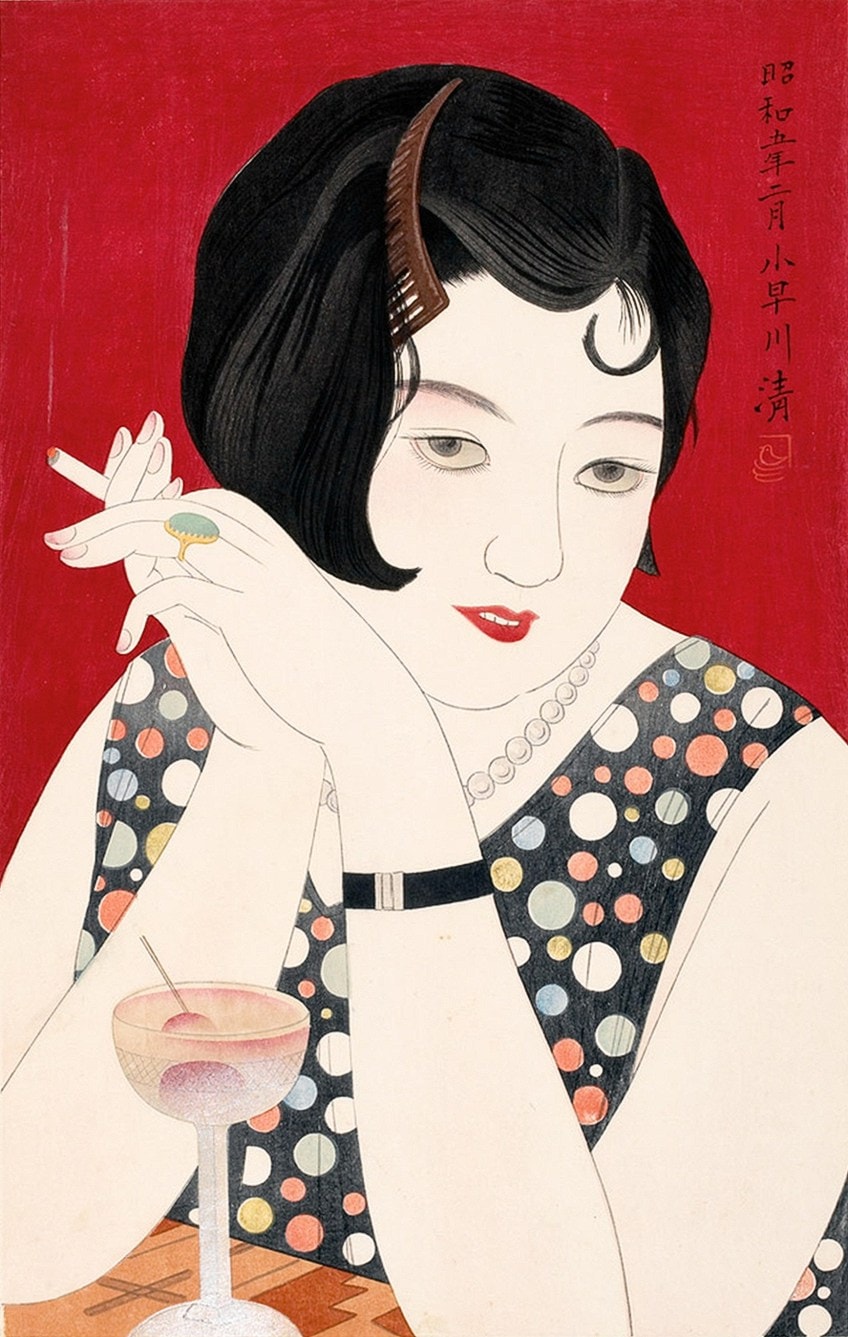
Demonstrating the shin-hanga genre, which referred to the new print form that emerged in Japan in the early 20th century that attempted to modernize traditional woodblock printmaking, Kiyoshi’s artwork manages to capture the tone without being excessively sentimental.
This print depicts a modern and independent Japanese woman against a stark red background, holding a cigarette and drink in front of her.
Many elements in this print were seen as controversial at the time. Firstly, the exotic red of both her lips and the background hint at something that is possibly more sensuous, as the woman’s obvious freedom from conventions is seen. Her short bob haircut, which was very popular at the time, further emphasized the concept of autonomy in this print, as the woman is seen clearly enjoying her evening alone. This is evidenced by her sly smirk and titled head, as well as the cigarette and cocktail pictured.
Rythme (1938) by Sonia Delaunay
| Artist | Sonia Delaunay |
| Date Painted | 1938 |
| Medium | Oil on canvas |
| Dimensions | 182 cm x 149 cm |
| Where It Is Currently Housed | Collection of Musée d’Art Moderne de la Ville de Paris, Paris |
Another very celebrated female artist to emerge from the 1920s Art Deco art period was Sonia Delaunay, who was married to fellow artist Robert Delaunay. While Delaunay mainly experimented with fashion and clothing design, she produced some very well-known paintings during her career. One of her famous Art Deco paintings includes Rythme, which she painted in 1938.
This artwork is of particular significance as Delaunay created it for the 15th annual Salon des Tuileries exhibition in Paris that happened in 1938.
A typical characteristic of Delaunay’s painting style, as seen in Rythme, was her use of geometric and abstract designs combined with incredibly bright and vibrant colors. These designs and colors were very popular during the Art Deco era, with Delaunay’s paintings showcasing the best features. At quite a large size, Rythme forces viewers to focus on the bright concentric circles by using bright primary colors juxtaposed against the monochromatic black and whites.
By placing layers of semi-circle curves unevenly next to one another, Delaunay was able to form a line of disjointed circles that joined up along a central axis. While plenty of colors are used in this composition, the few black and white circles are what really ground the artwork and establish balance across the canvas. Throughout the 1930s, Delaunay was very focused on exploring the topic of “rhythms”. By placing different colors next to one another, the complementary and contradictory circles helped create a series of new rhythms to view.
Portrait of Natasha Zakólkowa Gelman (1943) by Diego Rivera
| Artist | Diego Rivera |
| Date Painted | 1943 |
| Medium | Oil on canvas |
| Dimensions | 115 cm x 153 cm |
| Where It Is Currently Housed | Private collection |
An artist who is regularly featured on many lists detailing the most famous Art Deco paintings ever made is Diego Rivera. Perhaps better known for being the husband of iconic artist Frida Kahlo, Rivera also produced many paintings during his career and experimented with a variety of art movements in addition to Art Deco like Cubism, Realism, and Mexican muralism. Portrait of Natasha Zakólkowa Gelman, which he painted in 1943, was done upon request by Jacques Gelman, who was Natasha’s husband.
Within this Art Deco portrait of Mrs. Gelman, Rivera depicted a very elegant and classy woman.
Clad in a beautiful white gown that highlights her curves and shows some skin, Natasha appears very glamorous and enchanting as she gently leans against a couch while posing. Her large rings and bracelet also catch viewers’ eyes and delicately remind them that they are looking at a portrait of a wealthy woman.
The stark red of her lipstick and nail polish adds to the sensuality of the painting, as she appears to be a woman very sure of herself.
Behind her, Rivera has depicted giant calla lilies that tastefully outline her form. The inclusion of lilies, which have been known to be a very carnal and sculptural flower, also indicated Rivera’s Mexican background, as the exuberant flora was a classic example of his homeland. This Art Deco portrait of Mrs. Gelman exists as one of Rivera’s most lavish fantasies.
Nude with Calla Lilies (1944) by Diego Rivera
| Artist | Diego Rivera |
| Date Painted | 1944 |
| Medium | Oil on panel |
| Dimensions | 157 cm x 124 cm |
| Where It Is Currently Housed | Private collection |
A second famous Art Deco art piece by Diego Rivera that we have included on our list is Nude with Calla Lilies, which he painted in 1944. Like the above artwork, Rivera tended to include an element of sensuality in most of his artworks as he worked to accurately portray the sculptural side of the female body. In terms of Art Deco characteristics, Rivera’s focus on physicality in relation to women demonstrated the modernization that was occurring in society at the time.
Also known as Desnudo con alcatraces, this painting was one of Rivera’s more perplexing works. This was because it lacked the savage social and political commentary that was frequently featured in the majority of Rivera’s other paintings. As someone who was politically leftist, Rivera would normally take sides with the poorer elements of society and depict peasant life on smaller canvases.
However, this painting was quite large and focused primarily on the beautiful lilies and backside of the woman kneeling in front of them.
Within Nude with Calla Lilies, Rivera depicts a simple scene of a nude woman embracing the lilies. As the flower has always been known for its exquisite beauty, it has been suggested that the woman was instead embracing the loveliness of the Calla Lilies themselves. By placing the woman in direct contact with the lilies, Rivera attempted to make a fair comparison between the gentleness of a flower to that of a woman’s nature.
Portrait of Sra. Dona Elena Flores de Carrillo (1953) by Diego Rivera
| Artist | Diego Rivera |
| Date Painted | 1953 |
| Medium | Oil on canvas |
| Dimensions | 140 cm x 221.5 cm |
| Where It Is Currently Housed | Private collection |
Another featured artwork produced by Diego Rivera on our list is Portrait of Sra. Dona Elena Flores de Carrillo, which was painted in 1953. Long considered to be a good example of famous Art Deco art, this painting took on a very similar composition as his Portrait of Natasha Zakólkowa Gelman, which he painted 10 years earlier.
Depicting a woman lounging on a bed and staring confidently at the viewer, Rivera produced another painting that addressed the idea of sensuality through the woman’s unapologetic pose and gaze.
Pictured with a slight smirk on her face, viewers can only assume that the woman in this Art Deco portrait is pleased with being viewed by others. In addition to her appealing clothing, jewelry, and bright lipstick, a depiction of a more contemporary woman is given as she does not shy away from confronting those looking at her.
When viewing this artwork, the impression that we get from her is that she is fearless in her newfound freedom brought on by the modernizing world.
Symphony in Black (1983) by Erté
| Artist | Erté |
| Date Painted | 1983 |
| Medium | Serigraph on paper |
| Dimensions | 54.6 cm x 43.8 cm |
| Where It Is Currently Housed | Unknown |
Iconic French artist and designer Roman de Tirtoff, better known by his pseudonym “Erté”, was well-known within the Art Deco movement for his designs that spread across a wide range of media. Widely considered to be the “father of Art Deco”, Erté went on to create many memorable art pieces throughout his career. A piece that many have agreed to be one of his most famous Art Deco artworks is Symphony in Black, which he produced in 1983.
In this poster, a very slender woman is depicted, wearing a beautiful black dress, a feathery overcoat, and the most avant-garde headdress.
Beside her, she appears to be walking an equally slender black dog. This exists as a perfect example of Art Deco art, as very sleek and clean lines have been used to depict these two figures. Ornamental touches can also be seen on the woman’s headpiece, the cuffs on her arm that hold her coat in place, and the stylish collar that her dog is wearing.
Considered to be a glorious piece of Art Deco art, Symphony in Black combines Erté’s talents in graphic art with jewelry, fashion, and costume design. When viewing this graceful woman with her equally elegant dog, you cannot help but raise your eyebrows at the sheer exquisiteness of Erté’s work. While no distinctive facial features can be seen on the woman’s face, there is no mistaking the air of confidence with which she stands, as Erté managed to capture the assurance and natural beauty of the woman so well.
The paintings that emerged from the Art Deco movement are still celebrated in today’s modern art society. This is because most of the main features of these paintings went on to inspire various other art movements and can still be identified in some of the artworks that borrow from the Art Deco style currently. While we have only considered the top 10 most famous Art Deco paintings that exist, several others are also worth mentioning. We encourage you to read up about these other Art Deco artworks if you are interested.
Isabella studied at the University of Cape Town in South Africa and graduated with a Bachelor of Arts majoring in English Literature & Language and Psychology. Throughout her undergraduate years, she took Art History as an additional subject and absolutely loved it. Building on from her art history knowledge that began in high school, art has always been a particular area of fascination for her. From learning about artworks previously unknown to her, or sharpening her existing understanding of specific works, the ability to continue learning within this interesting sphere excites her greatly.
Her focal points of interest in art history encompass profiling specific artists and art movements, as it is these areas where she is able to really dig deep into the rich narrative of the art world. Additionally, she particularly enjoys exploring the different artistic styles of the 20th century, as well as the important impact that female artists have had on the development of art history.
Learn more about Isabella Meyer and the Art in Context Team.
Cite this Article
Isabella, Meyer, “Famous Art Deco Paintings – 10 Influential Art Deco Artworks.” Art in Context. November 24, 2021. URL: https://artincontext.org/famous-art-deco-paintings/
Meyer, I. (2021, 24 November). Famous Art Deco Paintings – 10 Influential Art Deco Artworks. Art in Context. https://artincontext.org/famous-art-deco-paintings/
Meyer, Isabella. “Famous Art Deco Paintings – 10 Influential Art Deco Artworks.” Art in Context, November 24, 2021. https://artincontext.org/famous-art-deco-paintings/.


